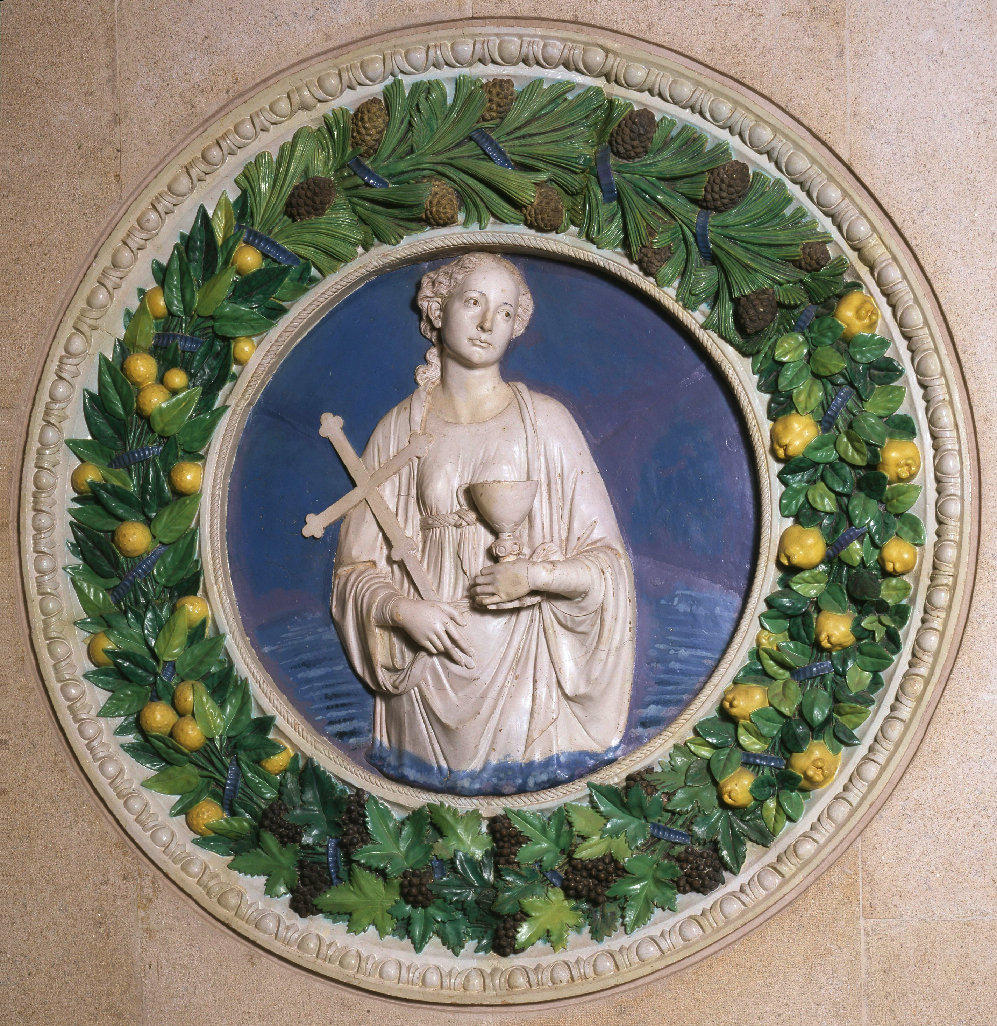
- Florence, c. 1465–70
- Enamelled terracotta
- Inv. 540
Faith
This medallion depicts the theological virtue Faith with its traditional attributes: the cross and the chalice. The virtue is personified by the female figure that emerges from a sky that contains a hint of clouds, suggesting an apparition. The white figure stands out against an intense blue background and the entire scene is framed in a garland of leaves and fruits, surrounded by the classical egg-and-dart motif.
These circular reliefs were used to decorate walls and ceilings, and were normally part of a decorative whole. They could be used both inside and outdoors, since the technique used to coat the terracotta was waterproof. This technique was inherited from the Arabs, who used it to make pottery for daily use, but Luca della Robbia started to use it on monumental sculptures. However, it was his nephew Andrea – the artist that probably produced this piece and that inherited his uncle’s workshop – who was mainly responsible for popularising this art.
Bought in Italy by Edward Cheney, 3rd quarter of the 19th century (?); Alfred Capel-Cure Collection; Francis Capel-Cure Collection; H. W. Harding Collection; Godefroi Brauer Collection. Acquired by Calouste Gulbenkian from Pertile Pollak, Cannes, 1 April 1929.
Diam. 180 cm
Goffen 1995
Rona Goffen (ed.), Museums Discovered. The Calouste Gulbenkian Museum. Fort Lauderdale, Florida: Woodbine Books, 1995, pp. 54–5.
Figueiredo 1999
Maria Rosa Figueiredo, Catalogue of European Sculpture, vol. II. Lisbon: Calouste Gulbenkian Museum, 1999, p. 26–31.
Lisbon 2001
Calouste Gulbenkian Museum. Lisbon: Calouste Gulbenkian Museum, 2001, p. 96, cat. 72.